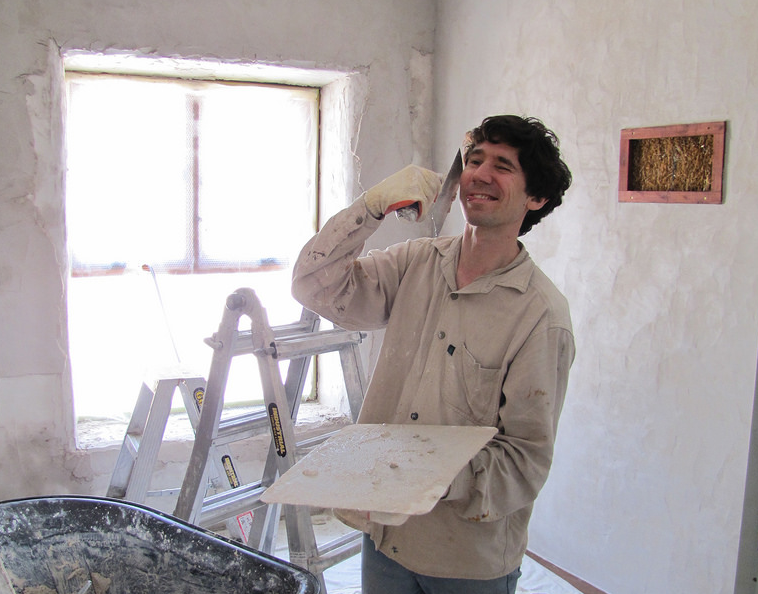Crucial Tools and Techniques for Specialist Plastering in your home
Crucial Tools and Techniques for Specialist Plastering in your home
Blog Article
Comprehending the Vital Techniques of Smudging for Home Enhancement Projects
In the world of home renovation, understanding the vital strategies of smudging can significantly improve both the capability and aesthetic appeal of an area. The plastering process incorporates vital stages, from meticulous surface prep work to the specific application of products.
Kinds Of Smudging Strategies
Although various gluing techniques exist, each serves an unique function and provides unique aesthetic top qualities. One of one of the most typical approaches is typical lime plastering, which is known for its breathability and adaptability. This strategy is specifically valuable for older frameworks, allowing moisture to run away while keeping architectural honesty.
For an extra distinctive look, trowel-on plastering techniques such as stucco and Venetian plaster are often utilized. Stucco, commonly made use of in outsides, offers resilience and weather condition resistance, while Venetian plaster is renowned for its lavish, sleek surface.
Additionally, there are more specialized strategies, such as skimming, which is a process that involves using a thin layer of plaster over existing surface areas to create a smooth coating. Each of these techniques can dramatically affect the total aesthetic and performance of a space, making it necessary to select the proper approach based on the certain needs of a job.

Devices and Products Needed

Essential devices and products are vital for successful plastering, making certain both efficiency and quality in the application process. A comprehensive plastering toolkit normally includes a hawk, trowels, and a float. The hawk works as a system to hold the plaster, while the trowels, available in different dimensions, are essential for application and smoothing. A float, typically constructed from rubber or sponge, is used to achieve an uniform surface.

Protective equipment can not be overlooked; safety and security safety glasses, gloves, and masks are essential to secure against dirt and particles. Ultimately, a durable ladder may be needed for getting to higher areas, making sure safety while functioning at elevation. Buying top quality devices and products ultimately adds to a more effective plastering job, producing a durable and aesthetically pleasing finish. Effectively outfitted, you prepared for efficient gluing and home renovation.
Step-by-Step Plastering Process
With the right tools and materials in hand, the next stage entails executing the plastering procedure with accuracy. Begin by preparing the surface to ensure ideal adhesion. Eliminate any type of loose particles, dust, or old plaster, and apply a bonding agent if needed.
Once the surface area is prepped, blend the plaster according to the supplier's instructions, achieving a smooth, lump-free uniformity. Making use of a trowel, use the first layer, called the scrape layer, to a density of concerning 5-10 mm. Ensure uniform coverage, and utilize a comb or scratcher to create grooves for better attachment of subsequent layers.
After enabling the scratch layer to set partly, use the second coat, or the brown layer, smoothing it out for an also coating. Use the finishing coat, which should be thinner and smoother.
As soon as the plaster has dried thoroughly, it can be sanded gently to eliminate learn the facts here now imperfections. Comply with up with a guide before painting for a refined last look.
Common Errors to Stay Clear Of
Falling short to acknowledge common errors can significantly impact the high quality of your plastering task. Overlooking to repair any underlying problems, such as moisture or structural address damage, can compromise the plaster's honesty.

Timing is likewise critical; numerous unskilled plasterers hurry the application. Permitting the preliminary layer to dry completely before applying succeeding layers is necessary to protect against excessive breaking and shrinking.
In addition, not utilizing the right devices can impede the completing procedure. Utilizing trowels that are also huge or little can affect your control and the smoothness of the finish.
Tips for Finishing Touches
Achieving a remarkable surface in plastering calls for attention to information and a few calculated methods. Once the initial application has dried out, start the ending up procedure by utilizing a moist sponge or trowel to ravel any kind of flaws. This step not just boosts the surface but also helps to eliminate any type of excess plaster that may have dried out unevenly.
Next, consider the usage of a fine-grit sanding block or pole sander for an extra sleek look. Sanding ought to be done delicately to prevent damaging the underlying layer - Plastering. Constantly use a mask to secure against dirt inhalation
After sanding, evaluate the surface under different lights problems to determine any type of missed spots or inconsistencies. Use a thin layer of finishing plaster if needed, feathering out the sides to mix perfectly with the surrounding location.
Final Thought
In verdict, understanding vital plastering methods dramatically enhances the top quality of home improvement tasks. Understanding the different kinds of plastering techniques, utilizing ideal tools and products, and adhering to an organized application procedure add to accomplishing a durable and smooth coating.
In the realm of home renovation, understanding the essential strategies of smudging can moved here substantially enhance both the functionality and aesthetic appeal of a room.Although numerous gluing techniques exist, each serves an unique function and uses distinctive aesthetic qualities. Plastering. For an extra textured look, trowel-on plastering methods such as stucco and Venetian plaster are typically used. Stucco, commonly utilized in outsides, offers toughness and weather condition resistance, while Venetian plaster is renowned for its luxurious, sleek finish
Commonly used plaster types include gypsum plaster, lime plaster, and cement-based plaster, each offering different purposes and settings.
Report this page